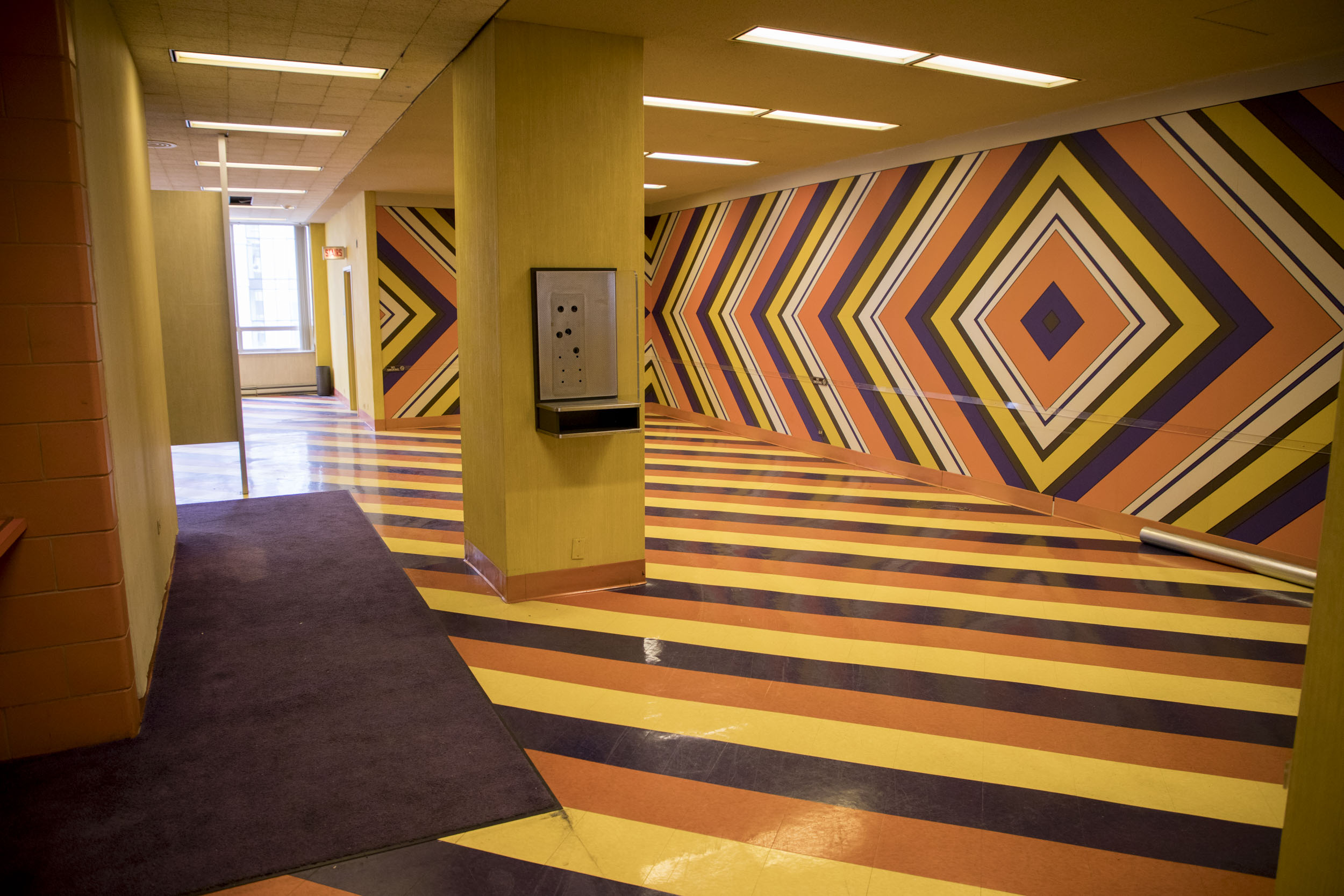The Fading Extravagance Of The Johnson Publishing Building
By Lakeidra Chavis

The Fading Extravagance Of The Johnson Publishing Building
By Lakeidra ChavisFor more than 40 years, the Johnson Publishing building was home to Ebony and Jet magazines, important cultural institutions that chronicled black success in America.
The 11-story building now sits vacant on Michigan Avenue in the South Loop after Columbia College bought it in 2010. The college put the historic building back on the market last year and hopes to sell the building this month.
The Chicago City Council is expected to vote on whether to designate the building a landmark by the end of the year, but there’s a catch. The move would only preserve the building’s exterior, meaning that the few remaining interior features — some of which are extravagant even by today’s standards — could disappear. A spokesman for the city’s landmarks commission said interior-design elements usually aren’t protected because it’s difficult to monitor changes to things like carpets or wallpaper.
The prospective owner is 3L Real Estate, a development company that repurposes historic and vintage buildings. Joseph Slezak, the company’s founder and CEO, said he expects to transform the space into a mix of retail and apartment units by the end of 2019, and there are plans to include an homage to the building’s history.
WBEZ recently visited the building to document what remains inside. Here’s a look at what we found with commentary by Lee Bey, the vice president of the DuSable Museum of African American History. Bey also took photos of the building’s interior back in 2013, which you can find here.
Going on a field trip

After opening in 1972, the Johnson Publishing building was the first and only downtown Chicago building bought and designed by African-Americans — publisher John H. Johnson and architect John Moutoussamy.
“I remember when this building was built, it was an icon of my childhood,” Bey said. “When (we’d) go on field trips downtown, and the bus would be on Columbus Drive, you know, that [building] was ours. The rest of it may be somebody else’s downtown, but this was ours.
‘This was a black space’

“[The interior design uses] things in an interesting fashion, that doesn’t look to history, but somehow it is still very black. When you walk through the spaces, there’s something about the color of it, the pattern of it, that let you know that this was black space.”
‘Its own identity’

“You would go inside the original lobby, there was sort of a maroon color motif there and a Richard Hunt sculpture, and then you’d go the elevators and it led you to this kind of menagerie of colors and textures. Everything — every floor — had its own identity.”
The test kitchen

“My favorite of all. This test kitchen alone should make it qualify for the [National Register of Historic Places]. Ebony magazine used to have recipes, and if your mother cooked like mine did, she tried a recipe out of Ebony. … So this kitchen has been responsible for millions of meals for millions of black folks all over the [African] diaspora. For that alone, it should be preserved.”
‘Classical’ details

“This gilded sink is one of my favorite pieces, too. In an otherwise very modern building, you have this sink that looks like it was stolen from Pompeii, right? It’s gilded and looks like a shell, and it has these classical knobs and faucets. … It looks like money, doesn’t it? It’s probably one of the only classical, design wise, elements in the building.”
Touch-ups

“This was in the Fashion Fair headquarters part of the building. This was the fashion line and aesthetic that Eunice Johnson was responsible for.”
Needed ‘vigilance’

“These are great spaces. Luckily, a few of us got to preserve them through photography. … These spaces will at least live on through that. But I think it sounds the alarm that these spaces, whether they’re downtown or on the South or West sides, that they are in need of added vigilance.”
Lakeidra Chavis is a producer and reporter for WBEZ. Follow her @lakeidrachavis.